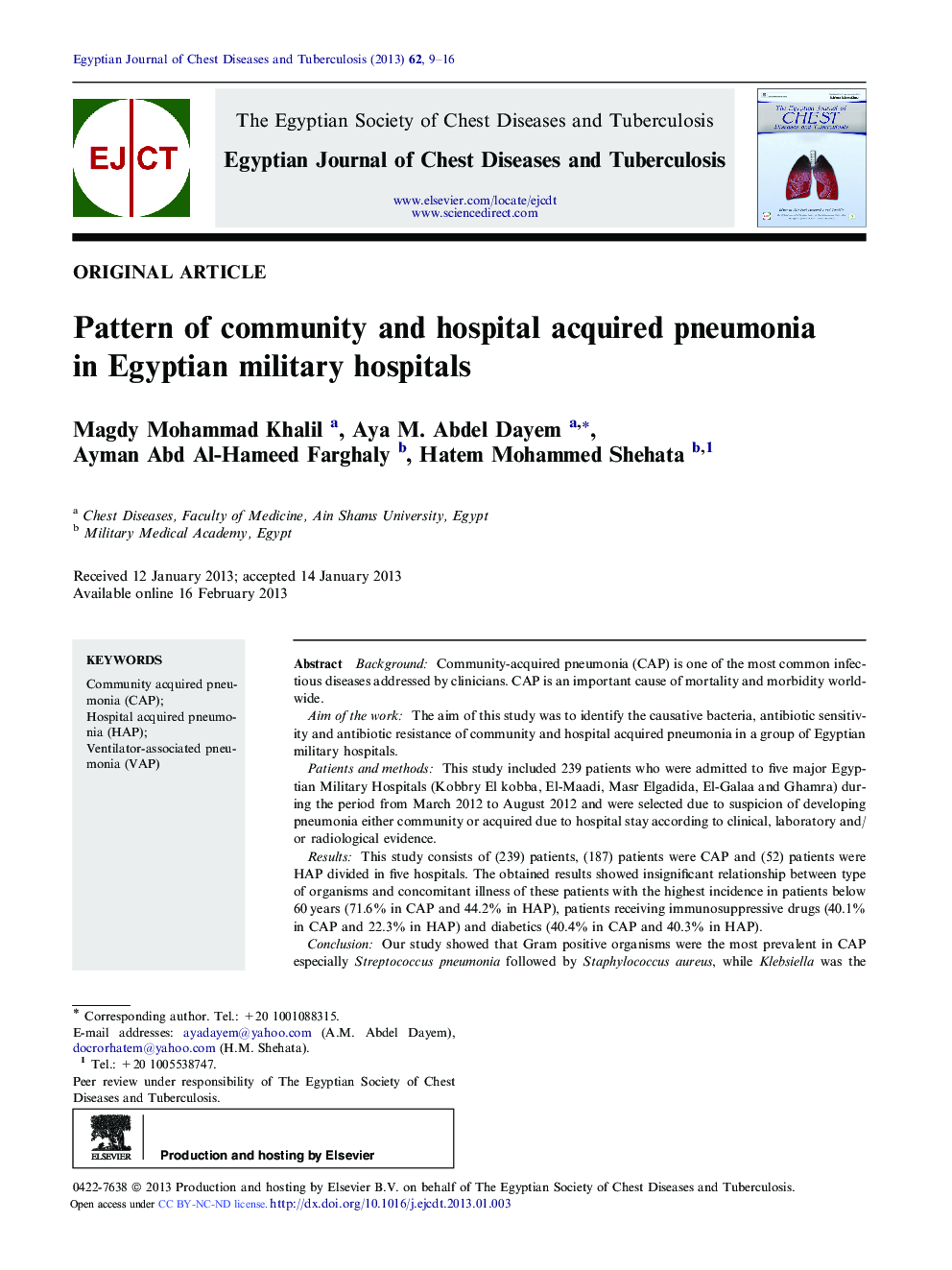| Article ID | Journal | Published Year | Pages | File Type |
|---|---|---|---|---|
| 3400302 | Egyptian Journal of Chest Diseases and Tuberculosis | 2013 | 8 Pages |
BackgroundCommunity-acquired pneumonia (CAP) is one of the most common infectious diseases addressed by clinicians. CAP is an important cause of mortality and morbidity worldwide.Aim of the workThe aim of this study was to identify the causative bacteria, antibiotic sensitivity and antibiotic resistance of community and hospital acquired pneumonia in a group of Egyptian military hospitals.Patients and methodsThis study included 239 patients who were admitted to five major Egyptian Military Hospitals (Kobbry El kobba, El-Maadi, Masr Elgadida, El-Galaa and Ghamra) during the period from March 2012 to August 2012 and were selected due to suspicion of developing pneumonia either community or acquired due to hospital stay according to clinical, laboratory and/or radiological evidence.ResultsThis study consists of (239) patients, (187) patients were CAP and (52) patients were HAP divided in five hospitals. The obtained results showed insignificant relationship between type of organisms and concomitant illness of these patients with the highest incidence in patients below 60 years (71.6% in CAP and 44.2% in HAP), patients receiving immunosuppressive drugs (40.1% in CAP and 22.3% in HAP) and diabetics (40.4% in CAP and 40.3% in HAP).ConclusionOur study showed that Gram positive organisms were the most prevalent in CAP especially Streptococcus pneumonia followed by Staphylococcus aureus, while Klebsiella was the most prevalent Gram negative organism. On the other hand our study showed that Gram negative organisms were the most prevalent in HAP especially Klebsiella followed by Pseudomonas aerginosa, while Staphylococcus haemolyticus was the most prevalent Gram positive organism.
